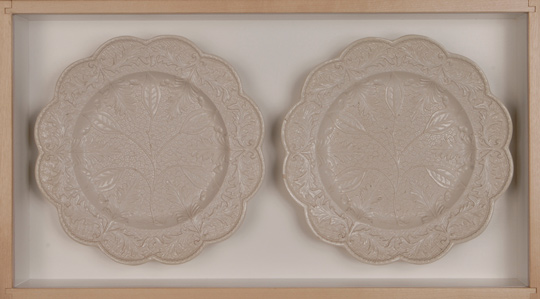In early modern Europe, the color white was a symbol of virtues such as purity, chastity, goodness, and even godliness. With the advent of more sophisticated methods of refi ning raw materials people learned how to make products more and more white. For example, they bleached fl our, textiles, and paper. They also came up with facial powders and creams to whiten the faces of both men and women. Around the same time, potters discovered that by removing the iron and manganese from stoneware clay they could create clean white tablewares of the sort on view here. This designation of white as a superior color also contributed to racial prejudice, an association at the heart of Herman Melville’s novel Moby Dick written one hundred years later. In this excerpt, Melville acknowledges the allure of the color white but also the feelings of terror caused by its cultural dominance.
Excerpt from Herman Melville,Moby Dick, 1857, as read byAdams Morgan

Plates, ca. 1760
Staffordshire, England
Salt-glazed stoneware
Chipstone Foundation 1962.8.1 and .2

